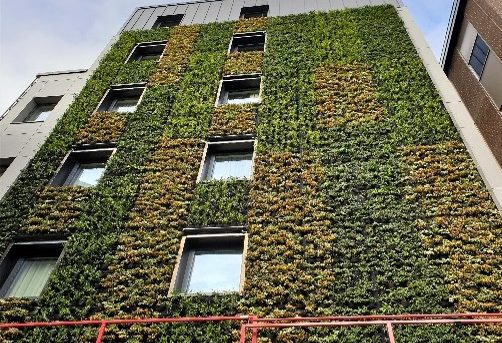Reimagining and retrofitting building stock will be a key driver for the built environment sector to meet net zero targets.
It’s estimated that around 80% of the building stock we’ll be using in 2050 is already built, meaning older properties will need to be retrofitted to meet carbon reduction targets.
And since a significant portion of a building’s carbon emissions are created during manufacture and construction – up to 11% – it is vital that existing buildings are long-lasting, rather than simply starting over again.
Retrofitting not only makes a building more efficient, reducing energy consumption or heat loss, but also delivers long-lasting benefits, making it cheaper and easier to operate and also meeting owners’ and occupants’ changing needs and expectations.
Modern construction methods or materials can be used to sympathetically preserve a building or area’s heritage, turning derelict or disused areas into vibrant places, such as rail arches becoming new public spaces or using old mills to build new homes. They can also be used to expand or upgrade spaces, retaining historical and attractive facades while adding more storeys and space.
Retrofitting can cover a wide range of remedial or improvement works, both to systems and structures.
For systems this requires improving existing or installing new, such as installing renewable energy for lighting and heating, as well as upgrading management systems, to better understand energy usage and occupants’ needs.
For structures, this requires work on or within the building’s frame or shell, such as upgrading insulation, installing double glazing or improving draught proofing.
Additionally, system retrofit may require structural retrofits to be completed first. For example, to fit solar panels or living walls, a building’s frame may need to be reinforced to support the weight. Repurposing an original steel frame or installing additional, lightweight structural steel can support this.
Any works to retrofit a property must be carefully planned of course, as changes to one area of a building can have knock-on effects elsewhere. A newly insulated roof will improve heat retention but will require improved ventilation systems, for example.
Retrofitting can also mean extending existing stock, including listed or period properties.
At Elland Steel we have delivered new steel frames within and next to existing structures, delivering buildings fit for the future and improving carbon credentials overall.
Working with main contractor Garenne and EPR Architects we delivered 170 tonnes of structural steel for Hoxton Hotel in Holborn, designing and constructing a six-storey extension and rooftop extension. The upgraded building brought a new lease of life into an old building, with a largely unaltered ground floor to preserve its heritage, and features a living ‘green wall’.
Having the knowledge, ability and experience to work sympathetically and efficiently with existing structures will be key as 2050 nears.

